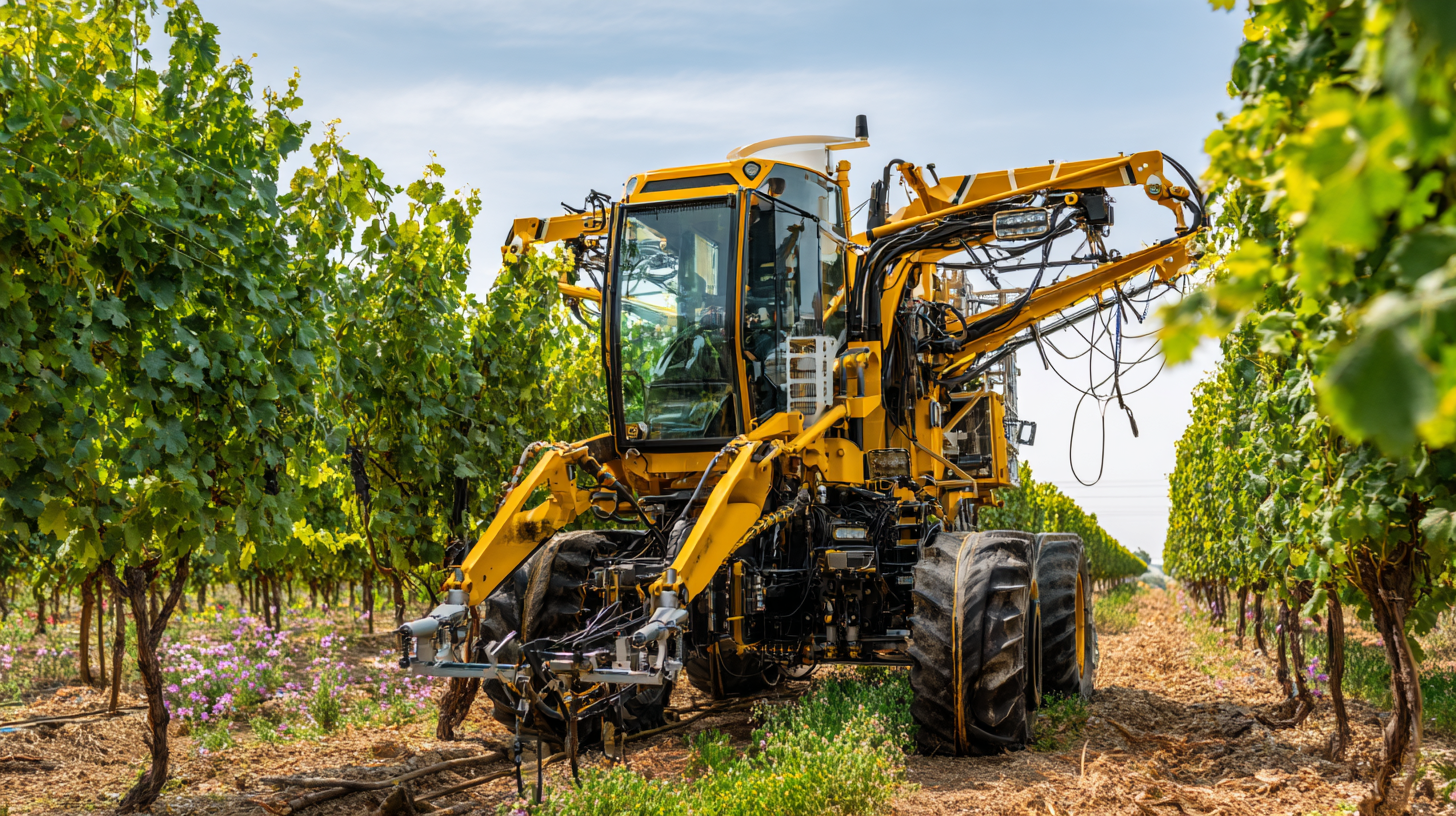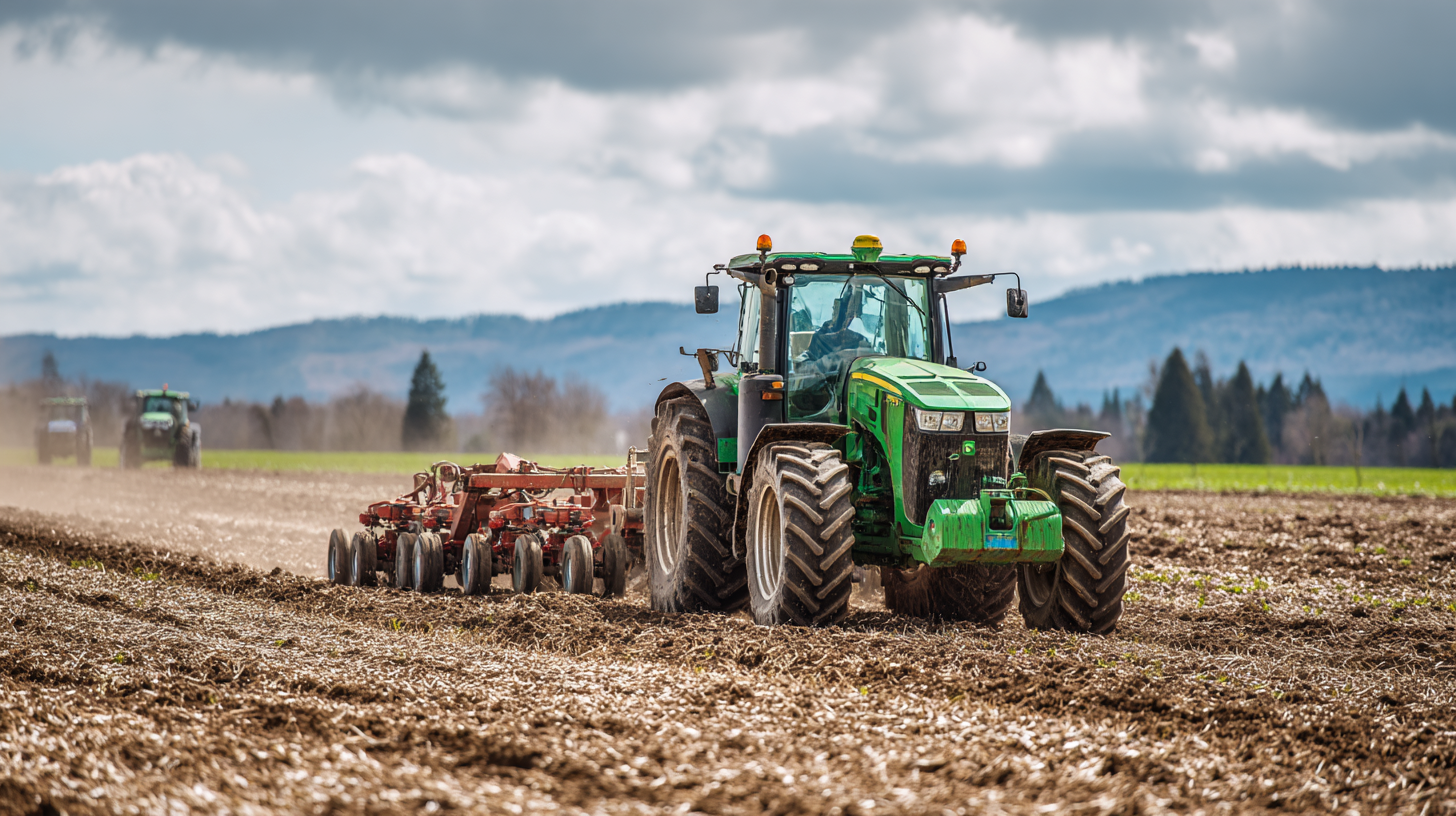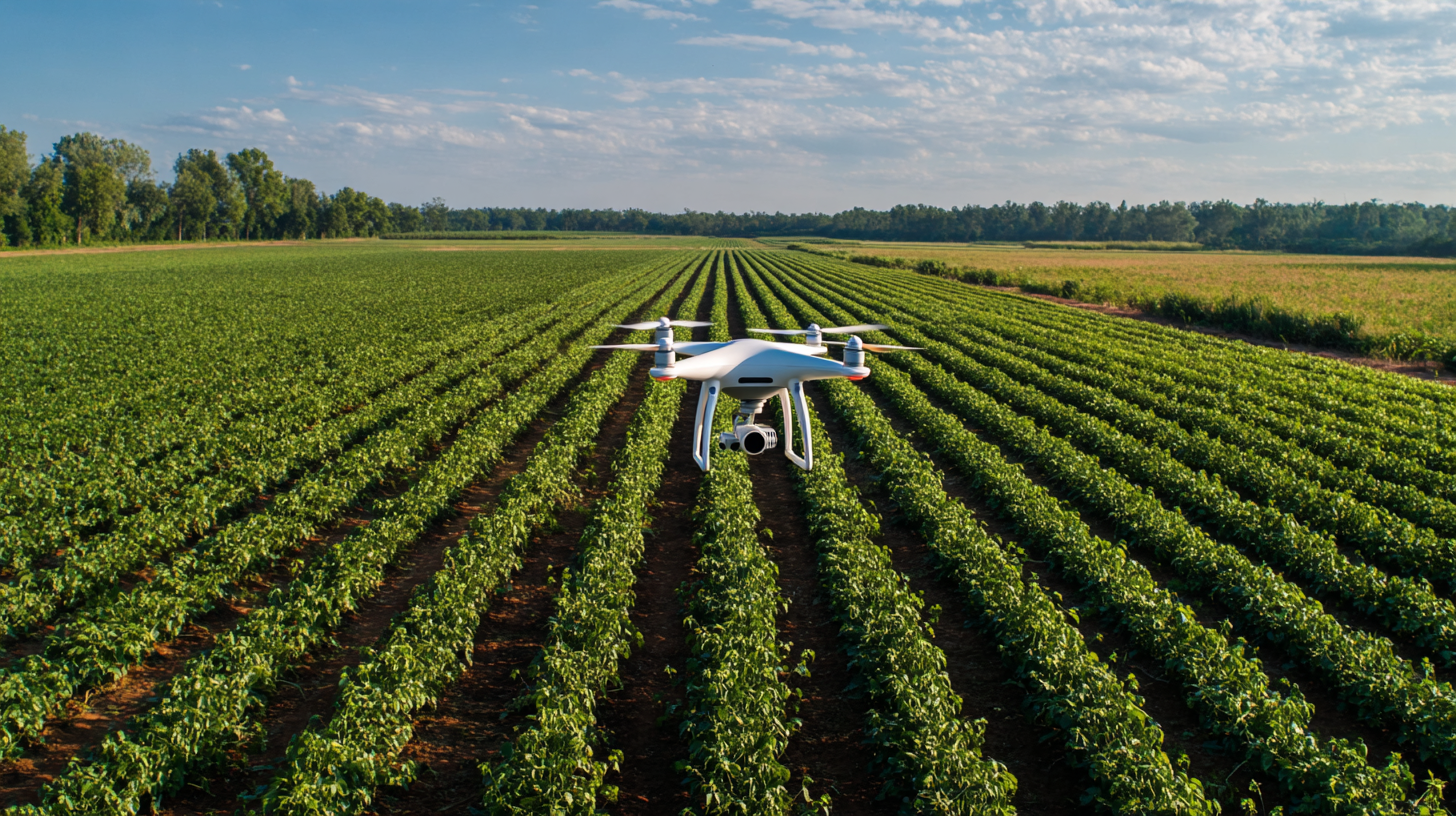

14, Raghava Enclave, Transport Road, Secunderabad, Hyderabad (500009)
©2024 All Rights Reserved by excitechrobot.com
The agriculture sector is undergoing a significant transformation as innovative technologies reshape traditional farming practices. Notably, Agriculture Robots are at the forefront of this revolution, driving efficiency and productivity in ways previously unimaginable. According to a report by Markets and Markets, the agriculture robotics market is projected to reach $20 billion by 2025, growing at a CAGR of 24.8% from 2020. This surge is fueled by increasing labor costs, the need for sustainable farming, and the demand for higher crop yields. As farmers face challenges related to climate change and resource shortages, leveraging robotic solutions becomes essential for enhancing operational efficiency. In this blog, we will explore the seven best agriculture robots that are not only streamlining farm operations but also paving the way for a more sustainable and productive future in the agricultural industry.

Agricultural robotics is at the forefront of transforming modern farming practices, providing solutions that enhance efficiency and productivity. These innovations are designed to address the diverse challenges faced by farmers, from labor shortages to sustainability concerns. By integrating systems such as autonomous tractors, drone technology, and precision irrigation, the agricultural sector is entering a new era of smart farming, where data-driven decisions lead to better resource management.
Tip: When considering the adoption of agricultural robotics, it's crucial to assess the specific needs of your farming operation. This involves evaluating the types of crops you cultivate and the scale of your land. Tailor your technology choices to ensure that they align with your operational goals to maximize the return on investment.
Moreover, emerging technologies in agriculture, including AI and machine learning, are enabling robots to improve crop monitoring and disease detection. Robots can now analyze vast amounts of data to predict the optimal time for planting and harvesting. This capability not only boosts yields but also minimizes waste and environmental impact.
Tip: Engage with technology providers who can offer demonstrations and training. Understanding how to effectively use these advanced tools will empower you to fully leverage their capabilities, ensuring a smoother transition and better long-term results in your farming practices.

The integration of advanced agriculture robots is significantly transforming modern farming practices, introducing features that enhance efficiency and productivity. One of the key characteristics of these robots is their ability to utilize artificial intelligence and machine learning algorithms. This capability allows them to analyze vast amounts of data regarding soil health, crop conditions, and weather patterns. By processing this information in real-time, farms can make informed decisions on irrigation, pest control, and harvesting schedules, ultimately leading to higher yields and better resource management.
Another vital feature of modern agriculture robots is their precision and automation in tasks traditionally performed by human labor. Robots equipped with advanced sensors and GPS technology can perform meticulous tasks such as planting seeds, applying fertilizers, or spraying pesticides with pinpoint accuracy. This not only minimizes the environmental impact but also reduces waste and costs associated with these processes. Additionally, some robots are designed to operate autonomously in challenging terrains or during adverse weather conditions, further enhancing their adaptability in diverse agricultural settings.
The integration of agricultural robots into modern farming is transforming traditional practices, making them more efficient and sustainable. These robots leverage advanced technologies like the Internet of Things (IoT) and AI to enhance crop management. For instance, IoT-enabled smart sensors play a crucial role in monitoring vital factors such as soil moisture and temperature, which are essential for optimal crop growth.
 Moreover, automated traps equipped with cameras and sensors can efficiently detect and manage pests, minimizing the reliance on chemical pesticides and promoting healthier farming environments.
Moreover, automated traps equipped with cameras and sensors can efficiently detect and manage pests, minimizing the reliance on chemical pesticides and promoting healthier farming environments.
By 2025, it is projected that more than 30% of global farms will incorporate AI-powered agriculture robots, automating various tasks and significantly reducing labor costs. Precision agriculture, which employs GPS and automation technologies, is enabling farmers to improve yield and operational efficiency. The benefits of robotics in agriculture also extend to harvesting; for example, specialized robots for strawberry picking address challenges related to labor shortages and the need for precise ripeness assessments, ultimately enhancing food safety and quality. As the agricultural landscape continues to evolve, the role of robotics will be pivotal in addressing both current challenges and future demands in food production.
The integration of robotics into agriculture is transforming crop management and enhancing yields in unprecedented ways. Automated systems now assist farmers in precision planting, irrigation, and harvesting, allowing for a level of efficiency that was previously unattainable. Drones equipped with advanced imaging technology are being used to monitor crop health in real-time, enabling timely interventions that can significantly boost productivity. These robots analyze variability within fields, helping to optimize resource allocation and reduce waste, which is crucial for sustainable farming.
Moreover, robotics is improving labor efficiency and addressing workforce challenges in agriculture. With the rise of autonomous tractors and robotic harvesters, farmers can perform tasks that once required large teams, reducing labor costs and mitigating risks associated with labor shortages. These machines are designed to operate around the clock, ensuring that work can be completed in a timely manner, irrespective of weather conditions. As a result, farmers can produce more food while minimizing their environmental footprint, demonstrating that the future of agriculture is not only innovative but also sustainable.
The agricultural robotics market is witnessing remarkable growth, with projections indicating an increase from $8.13 billion in 2025 to $26.35 billion by 2032, representing a compound annual growth rate (CAGR) of 18.3%. This expansion is reflective of broader trends in agricultural automation as farmers seek to enhance efficiency and sustainability in their practices. Reports from leading organizations underscore the transformative potential of these technologies, emphasizing their ability to address pressing challenges such as labor shortages and climate variability.
As countries move towards automation, particularly in developed regions, it is essential to recognize the key factors driving these advancements. The integration of artificial intelligence into farming not only facilitates increased productivity but also promotes sustainable practices. By employing smart farming solutions, agricultural robots can optimize resource use, reduce waste, and significantly contribute to the goals of sustainable development outlined in the United Nations 2030 Agenda. This shift towards intelligent agriculture is not just a technological upgrade; it is a vital leap toward creating resilient food systems capable of meeting the demands of a growing global population while preserving the environment.
| Robot Type | Functionality | Impact on Sustainability | Adoption Rate (%) | Future Potential |
|---|---|---|---|---|
| Autonomous Tractors | Plowing, planting, and tilling | Reduces fuel consumption and emissions | 35% | High |
| Drones | Crop monitoring and spraying | Minimizes pesticide use and waste | 50% | Medium |
| Robotic Harvesters | Harvesting fruits and vegetables | Reduces labor costs and waste | 30% | High |
| Soil Sensors | Soil quality monitoring | Promotes efficient use of resources | 65% | High |
| Planting Robots | Seed planting with precision | Optimizes planting density and reduces waste | 25% | Medium |
| Weeding Robots | Weeding through mechanical means | Reduces herbicide use | 40% | Medium |
| Livestock Monitoring Robots | Monitoring health and behavior of livestock | Enhances animal welfare and productivity | 20% | Medium |
